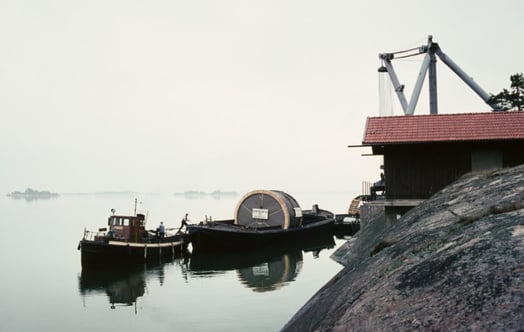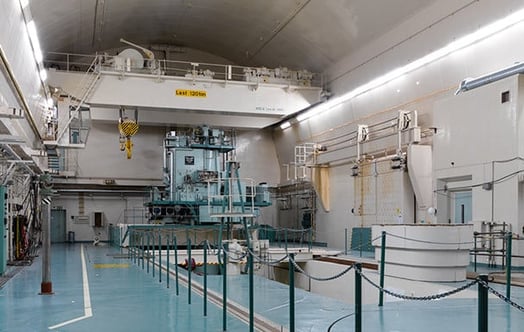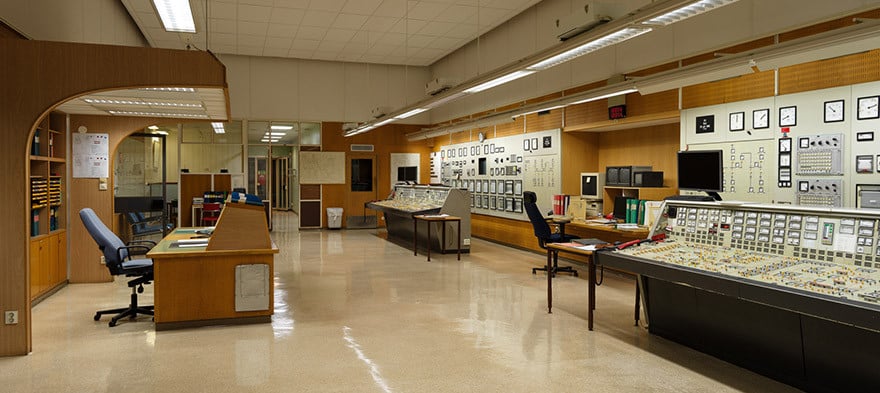
Stenungsund's power plant
The power plant in Stenungsund was commissioned in 1959 and was for decades an important part of Sweden's electricity supply. A petrochemical facility was erected around the plant which currently employs around 3,000 people. A gigantic bedrock facility with machine rooms, workshops, oil depots and waterworks is concealed under the chimneys at Vetteberget.
The strong growth after the end of the Second World War meant that electricity generation in Göta River was insufficient to supply the region. The situation worsened due to years of low precipitation and it was necessary in 1947 to introduce electricity rationing to manage the electricity shortage. To solve the problem, Vattenfall planned to build a coal- or oil-fired thermal power plant which could be connected to the planned 380 kV switchgear in Stenkullen.

Block 1 boiler, HT turbine and steam pipework. Year: - | Place: Stenungsund | Creator: Henrik von Klopp/AB Industrifotografi | ID: VF300050
The search for a suitable location began in 1946 and about ten sites were investigated. One requirement was that the facility should be constructed in bedrock to protect against attacks. In addition, an ice-free deep water port to receive fuel by sea and a fresh water source for process water were required.
It became obvious rather soon that Stenungsund met the requirements, and there was also a political desire to create industrial jobs there. In the early 1950s, Stenungsund was a seaside resort with low economic activity in the winter.
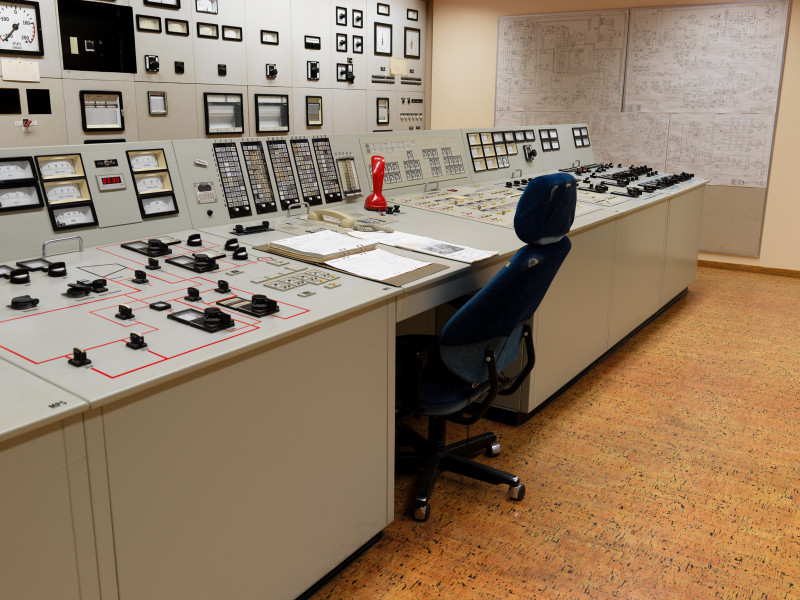
Block 1, control panel. Year: - | Place: Stenungsund | Creator: Henrik von Klopp/AB Industrifotografi | ID: VF300052
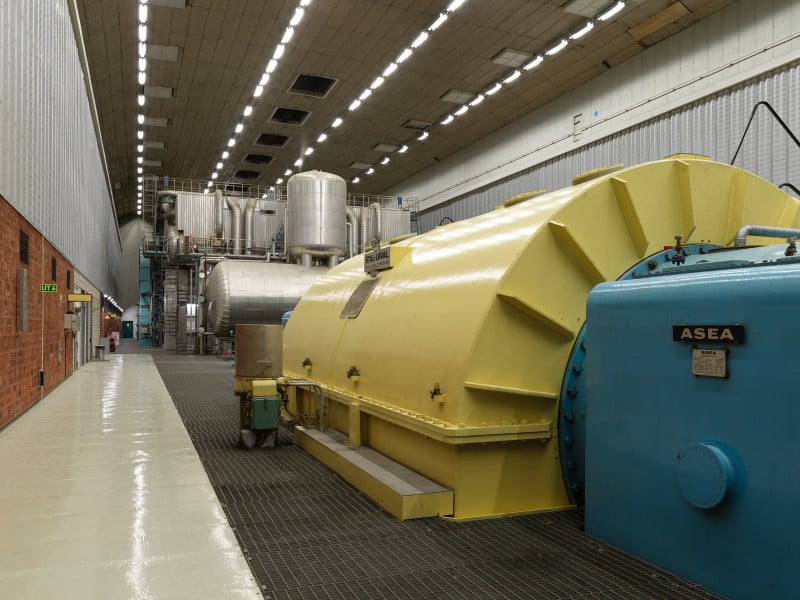
Block 3, boiler seen from turbine's east sid. Year: - | Place: Stenungsund | Creator: Henrik von Klopp/AB Industrifotografi | ID: VF300051
The construction project started in August 1955. Machine rooms, oil depots and an oil harbour were blasted out during a three year period. A total of 1.5 million cubic metres of rock was blown out and large areas of the modern Stenungsund was built using the filling materials from the bedrock. Housing and a waterworks were also erected, and today residents in Stenungsund still get their drinking water from Vattenfall. When the work was at its peak in 1959, more than 1,100 people were employed.
Alongside the construction work, intensive development work was under way at Vattenfall's Steam Building division supervised by senior engineer Uno Blomqvist. Orders were placed mainly with Swedish companies, among them Svenska Maskinverken (boilers), STAL (turbines) and ASEA (generators). The biggest challenge was to get the most out of the boiler in relation to the outer dimensions so that the boiler unit would fit into the blasted out space in the bedrock. For this reason oil was chosen as fuel instead of coal. The installation in the bedrock also required special ventilation and cooling solutions, while extensive work was carried out to minimise soot and sulphur dioxide emissions.
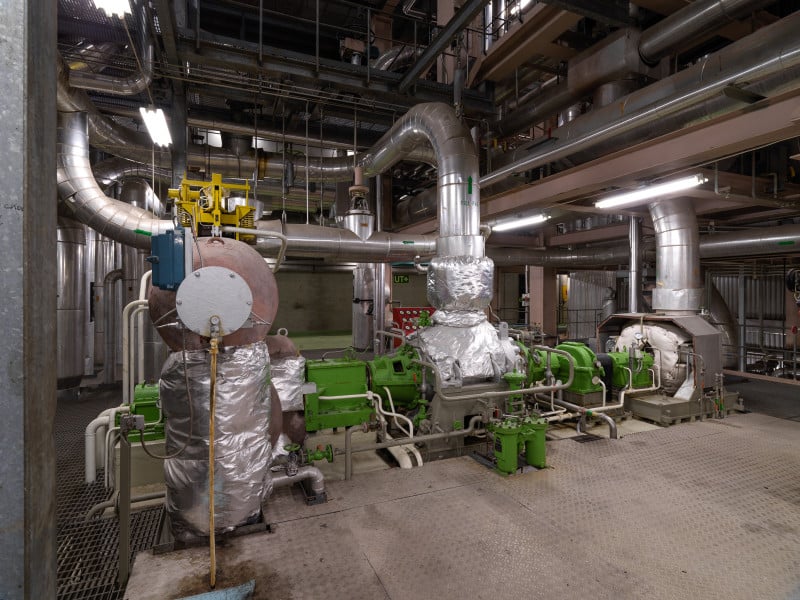
Block 4, feedwater pump from left. Year: - | Place: Stenungsund | Creator: Henrik von Klopp/AB Industrifotografi | ID: VF300053
The 160 MW Block 1 was commissioned in 1959 and generated 176 GWh in the first year. A high degree of efficiency was given priority over a fast startup during the development work, but it was still possible to start and phase in a block within 65 minutes. The degree of efficiency was 38%.
The almost identical Block 2 was completed a year later. The extension with Blocks 3 and 4 was built at the same time and they were commissioned in 1966 and 1969 respectively. The last two blocks had a greater output due for instance to the use of circulation pumps in the boilers, each with a capacity of 275 MW.
The ever-threatening electricity shortage meant that commissioning was rushed, while the units were at the forefront of technology and used innovative, sometimes unproven, construction solutions. The first operational years were not without their problems. The blading in the turbines for instance broke down on several occasions. Plant operations did not become fully stable until the early 1970s. In 1992, the burners in Blocks 1 and 2 were replaced in order to reduce nitrogen oxide emissions.
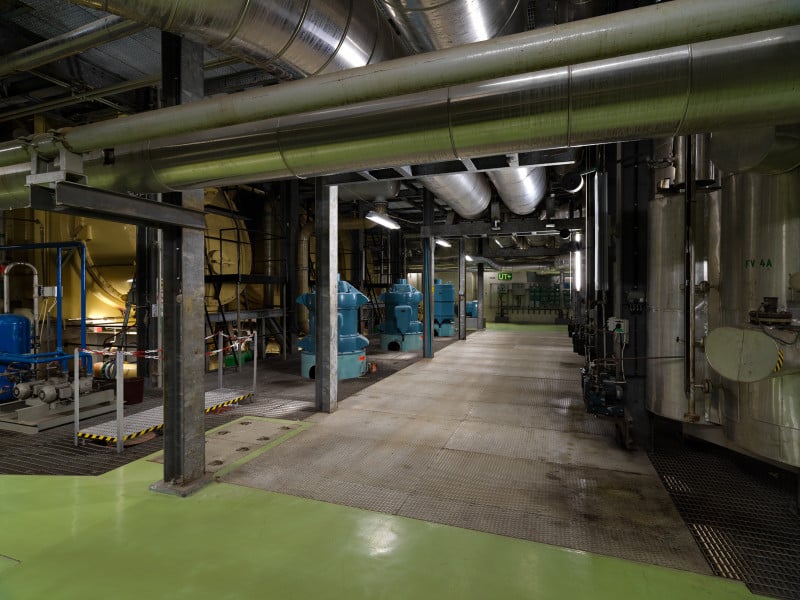
Block 3, walkway with condenser, cooling water pump and pre-heater. Year: - | Place: Stenungsund | Creator: Henrik von Klopp/AB Industrifotografi | ID: VF300055
At the end of the 1960s, the rate of expansion in hydro power slowed down, while electricity consumption continued to increase. Stenungsund was an important part of the country's regular electricity generation during this period. The greatest usage was between 1966 and 1979, when the number of employees was around 300 people. Nuclear power was introduced on a large scale in the 1970s, which reduced the need for fossil-fired power plants. After that, Stenungsund mainly operated as a backup power plant to cope with extreme weather conditions or disruptions. Block 4 for instance was run in February 2010 when it was very cold while several nuclear reactors were taken out of service.
Project Fenix was initiated at the beginning of the noughties, which meant a comprehensive modernisation of the power plant. It was to be equipped with an advanced flue gas cleaning system and would burn residual oils from Preem's refinery in Lysekil. Negotiations were also initiated with Göteborg Energi on the delivery of district heating. When Gothenburg chose to invest in its own production facility, there was an economic downturn and the project was cancelled.
Stenungsund was included in the Swedish Power Reserve between 2003 and 2015, with the exception of the winter of 2009. The last time the power plant was operated was when Block 3 was run in January 2015 when transformer failure affected the Gothenburg area. The two oldest blocks have not been in use since the mid-1990s.


